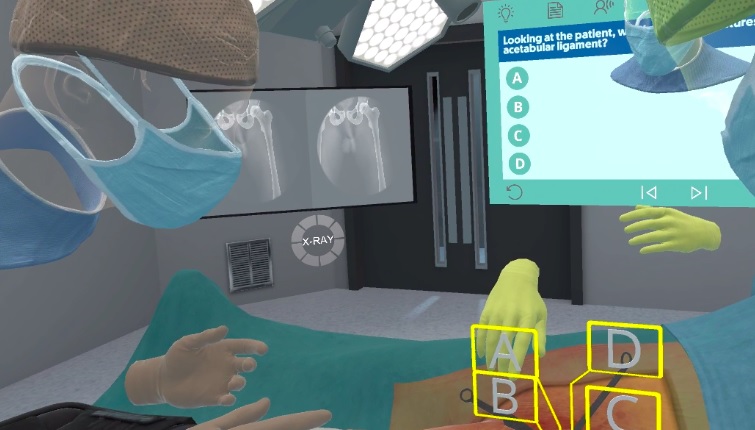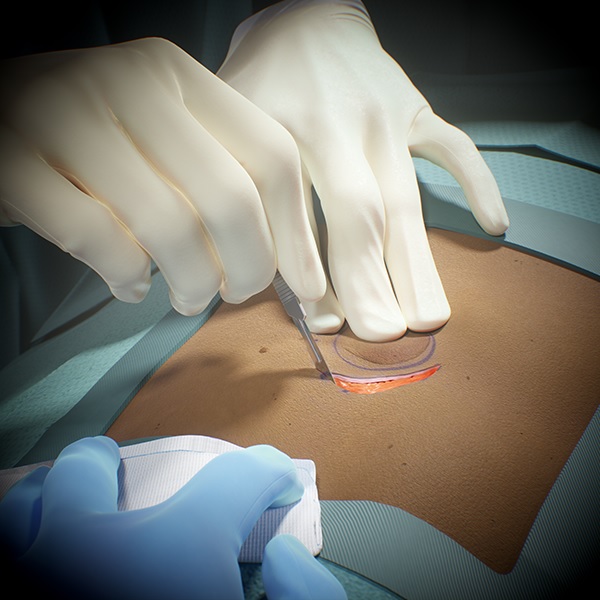
July 29, 2021 – FundamentalVR, a provider of immersive virtual reality (VR) surgical skills training and data analytics, has today unveiled further advancements on its ‘Fundamental Surgery’ platform.
According to the company, the advancements provide a level of realism that produces “a credible complement and alternative to traditional medical education methods”. The platform’s new soft tissue capabilities leverage full force feedback kinesthetic haptics, high-fidelity graphics and 3D spatial technology to allow surgeons to manipulate and feel the texture of anatomy as if they were in the operating room. FundamentalVR added that the enhancements open the door for accelerated skills acquisition across a wide range of procedures that will help trainees to build capability and confidence ahead of human interaction – something that the company refers to as ‘Pre-human competence’.
The enhanced soft tissue capabilities are part of the company’s five-year technology and clinical journey that has seen its Haptic R&D team work closely with surgeons and educators from around the world, combining spatial technology and medical specialists such as Dr. David Farley at the Mayo Clinic. Furthermore, the development of these advanced tissue capabilities allows FundamentalVR to deliver enhanced solutions for current simulations in areas such as spine, orthopedic and ophthalmology as well as new capabilities in soft tissue surgery, interventional and more.
Richard Vincent, co-founder and CEO of FundamentalVR, said: “With the addition of advanced soft tissue sensation capabilities, users are able to make independent decisions about approach and patient interaction and have full high-fidelity control, feeling and vision as they make that interaction. We have brought a new level of realism to medical education to an extent that the need for surgeons to practice in wet labs, on cadavers or patients could be eliminated within just a few years.”

FundamentalVR’s simulations are delivered through its Fundamental Surgery platform, which allows users to experience the same sights, sounds, feelings and sensations that they would in a real operating room. It combines haptic technology and surgical analytics to allow for precision techniques to be learned. It is made possible by the company’s ‘Haptic Intelligence Engine’ that delivers full kinesthetic force feedback haptics into a variety of handheld devices, ranging from base station held instruments to haptic gloves within a submillimeter level of accuracy.
The company noted that through the combination of its soft tissue simulation and haptics technology, trainees can build the muscle memory required for proficiency and essential for precise surgical skills transfer.
Already deployed prior to the pandemic, the challenges of social distancing and reduction in elective surgeries has fueled a surge in the use of Fundamental Surgery as an alternative to in-person and on human learning, according to FundamentalVR.
Benefits of the platform include:
- Scalable: Surgeons can advance skills in highly precise and expert areas without the expense and logistical challenges of using traditional wet labs and cadavers;
- Remote Education: Users can perform highly complex procedures fully simulated in VR;
- Muscle Retention: Surgeons can create high frequency motor skills interactions that build muscle retention in a ‘safe to fail’ environment;
- Accelerated Learning: Provides users measurements for every interaction and decision to deliver a detailed level of analysis. Specific metrics include economy of movement, 3D spatial awareness, surgical gaze, respect for tissue, and human factors such as dealing with adverse events and complications;
- Progressive Techniques: Through virtual simulation surgeons can test difficult procedures safely before entering the operating room.
For further information about FundamentalVR and its Fundamental Surgery platform, please visit the company’s website.
Image credit: FundamentalVR
About the author
Sam is the Founder and Managing Editor of Auganix. With a background in research and report writing, he has been covering XR industry news for the past seven years.
